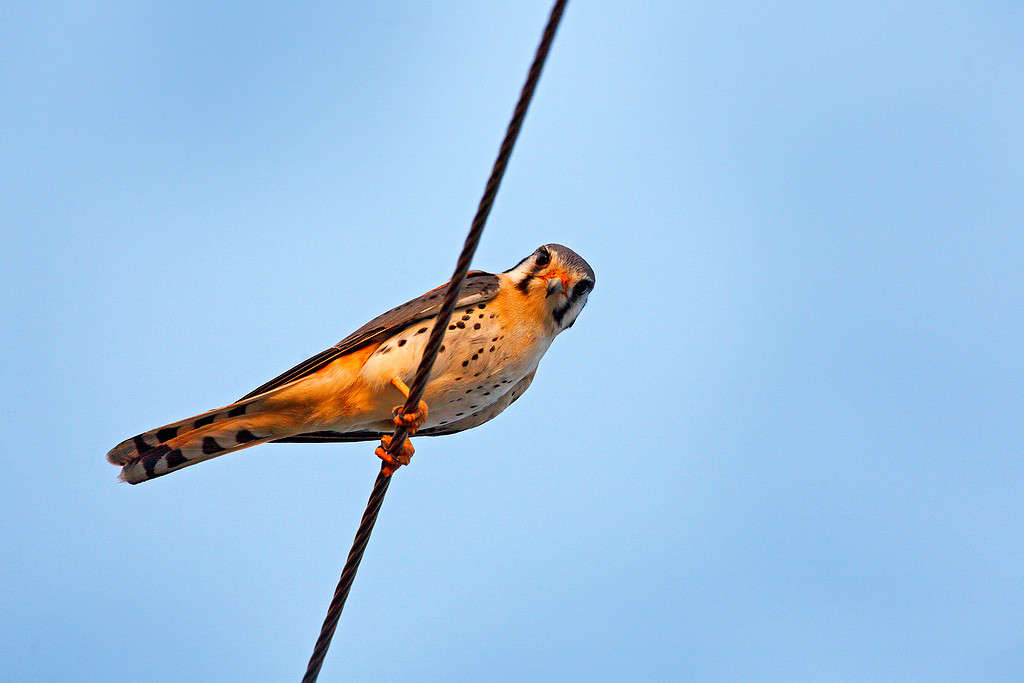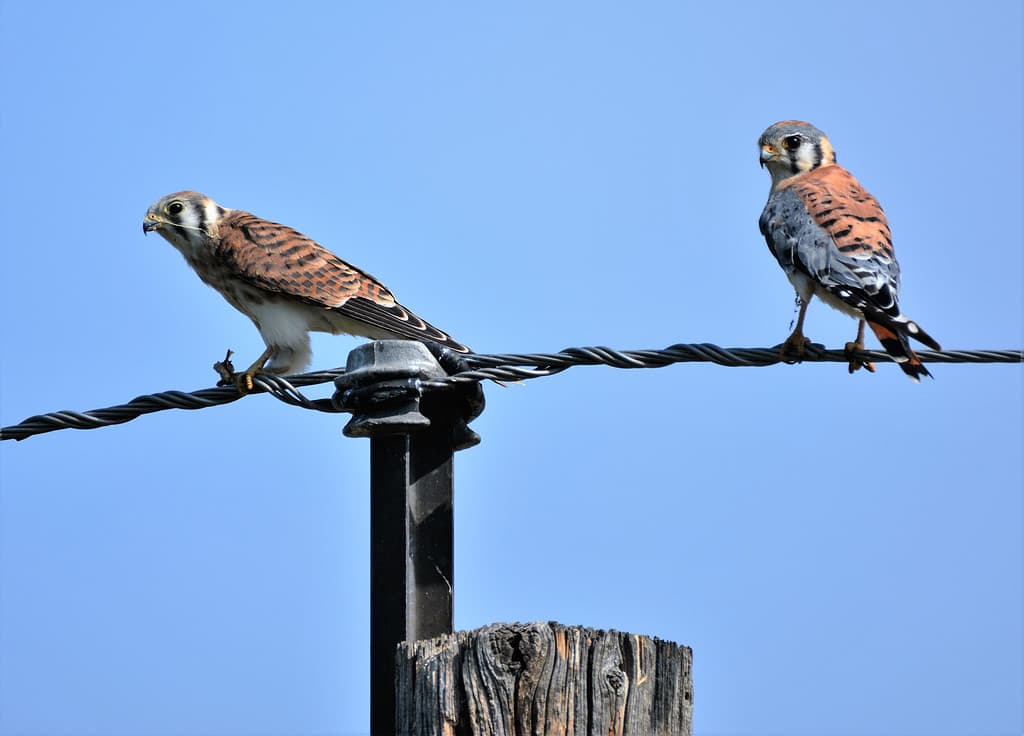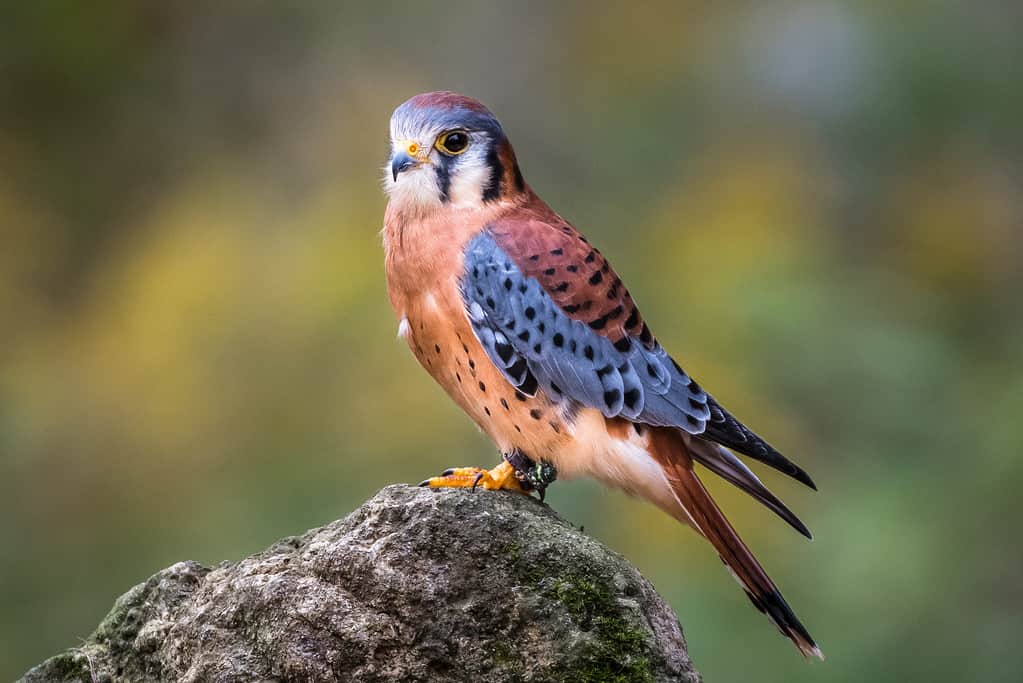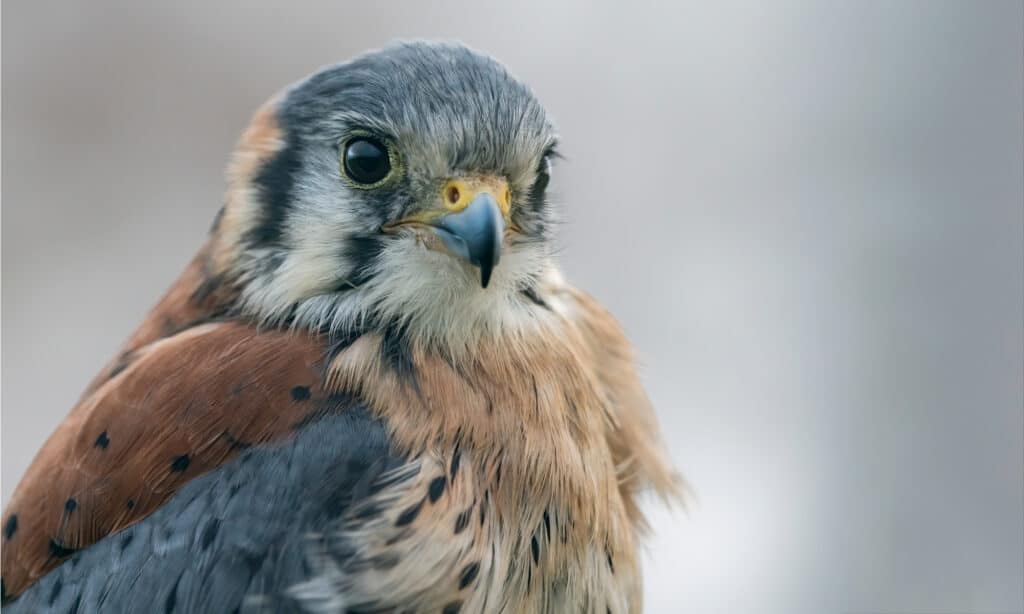Meet the most common falcon in North America: The American kestrel! A small, often overlooked raptor, the kestrel (Falco sparverius) is widespread throughout North and most of South America from Alaska all the way down through Argentina. These falcons are easily identifiable thanks to their colorful feathers and small size. But just how big is a kestrel? Let’s take a look at their size and other interesting facts about this tiny predator.
How Big is a Kestrel?

American kestrels prefer open areas where they can easily hunt food. They can be found in many habitats.
©Ondrej Prosicky/Shutterstock.com
The American kestrel is not a large bird. In fact, it is the smallest falcon in North America. Roughly the same size as a blue jay or mourning dove, this small falcon has an average weight of 4.1 ounces (117 grams). They measure 8-12 inches in length and have a wingspan of 20-24 inches. Like most birds of prey, they are sexually dimorphic, and the females are larger than the males.
Now that we know how big a kestrel is, let’s take a look at some other fun facts about these pint-sized falcons.
1. Males Look Different Than Females

Male kestrels like the one on the right have distinctive slate-colored wings.
©JRLPhotographer/iStock via Getty Images
In addition to being sexually dimorphic in size, kestrels are one of only three North American raptor species that are sexually dimorphic in color and pattern. Their plumage is visible even before they fledge.
While both sexes are colorful, the males have more distinctive coloration. Males have rufous-orange backs and tails with black barring. Their wings are slate-grey with black primary feathers and secondaries with white spots. In contrast, the females do not have the slate-grey coloration but are primarily rufous-brown with heavy dark bars on their tails and backs. The male’s breast is white with some orange tints, while the female’s is cream with brown flecks.
2. Their Name Means “Falcon of Sparrows”

Kestrels are one of eight falcon species found in North America.
©emranashraf/iStock via Getty Images
During the 1800s and early 1900s, kestrels were commonly referred to as sparrowhawks. However, this common name typically refers to birds in the Accipiter genus, while kestrels fall into the genus Falco. They are most closely related to peregrine falcons, not other types of sparrowhawks.
The kestrel’s scientific name does little to clear up this confusion. Falco sparverius translates to “falcon of sparrows.” This name was given to these small falcons because they sometimes prey on small passerine birds. Kestrels are remarkably good at hovering, which allows them to easily aerially surveil for prey. While they sometimes eat birds, they also hunt large insects (such as cicadas, dragonflies, and grasshoppers), scorpions, mice, small lizards, voles, and other small animals.
3. Kestrels Stash Their Food

Kestrels often sit on fence posts in open fields to watch for prey.
©M. Leonard Photography/iStock via Getty Images
If a kestrel can’t finish a meal, they will sometimes save the leftovers. The clever birds hide surplus food in tree cavities, fence posts, bushes, or other covered places to return to later if they need a snack. By stashing food for later, kestrels give themselves a food source for times when they can’t catch anything. Hiding it also prevents other animals from taking the hard-earned meal.
4. They Aren’t at the Top of the Food Chain

These speedy birds can fly up to 39 miles per hour.
©Katie Duncan-Burt/iStock via Getty Images
While kestrels are predators, their tiny stature moves them down from the top of the food chain. Just as kestrels catch smaller birds for food, larger birds will happily prey upon kestrels. Since kestrels are diurnal and are most active during the day, they usually face predation by other diurnal predators, though owls have been known to claim them occasionally. Red-tailed hawks, Cooper’s hawks, sharp-shinned hawks, northern goshawks, and even barred owls are common predators. Kestrels are also at risk of predation from American crows and snakes.
5. Populations are Declining

There are an estimated 9.2 million American kestrels in the wild.
©Albert Beukhof/Shutterstock.com
Although the kestrel is the most common falcon in the Western Hemisphere, populations are declining. According to the North American Breeding Bird Survey, populations have declined at a rate of 1.41% per year between 1966 and 2019. This puts the population at a total decline of approximately 53% over the past 60 years. Populations in the eastern United States have declined the most dramatically.
Much of this population decline is due to the use of pesticides that kill insects that serve as food sources. Pesticide contamination can also threaten the birds’ ability to reproduce, reducing clutch sizes and lowering hatch rates. Habitat loss is another contributing factor, as wooded land is cleared, and nesting sites are destroyed. While kestrels are still considered a species of least concern, if these population trends continue, populations could decrease by another 50% by 2075.
The photo featured at the top of this post is © Albert Beukhof/Shutterstock.com
Thank you for reading! Have some feedback for us? Contact the AZ Animals editorial team.







